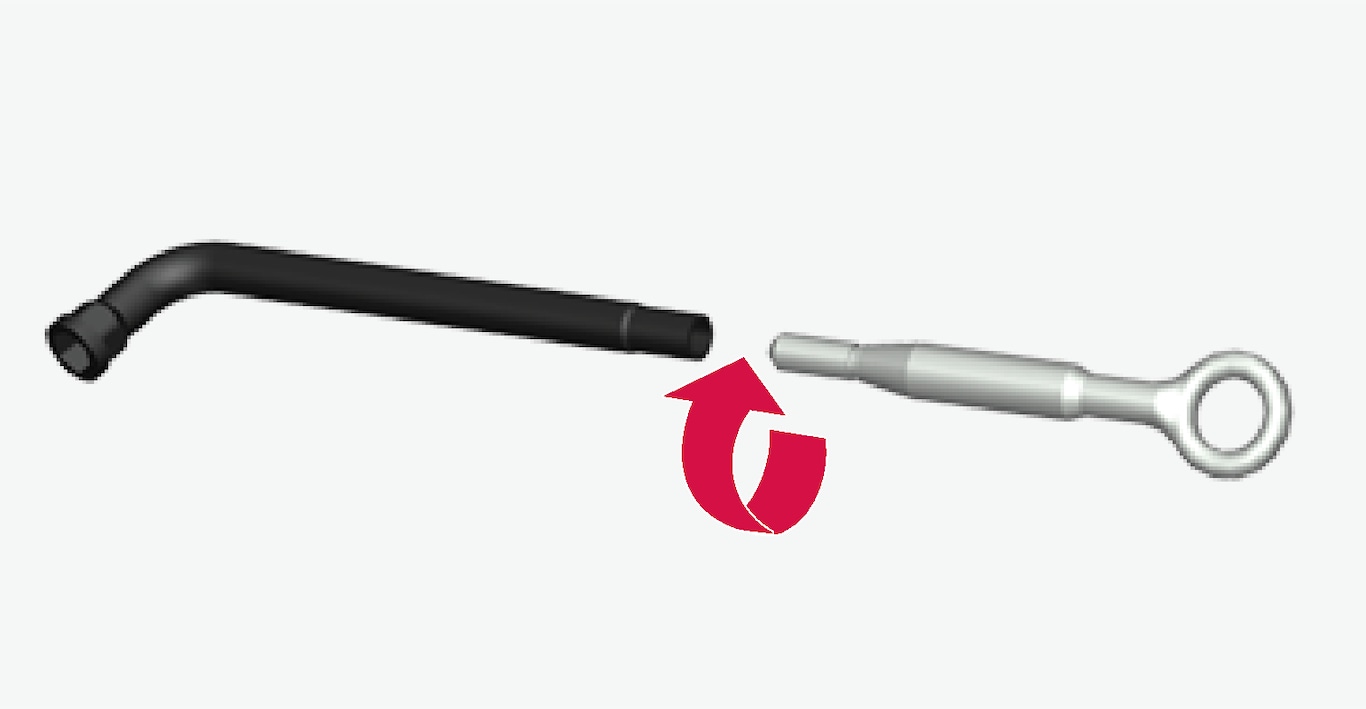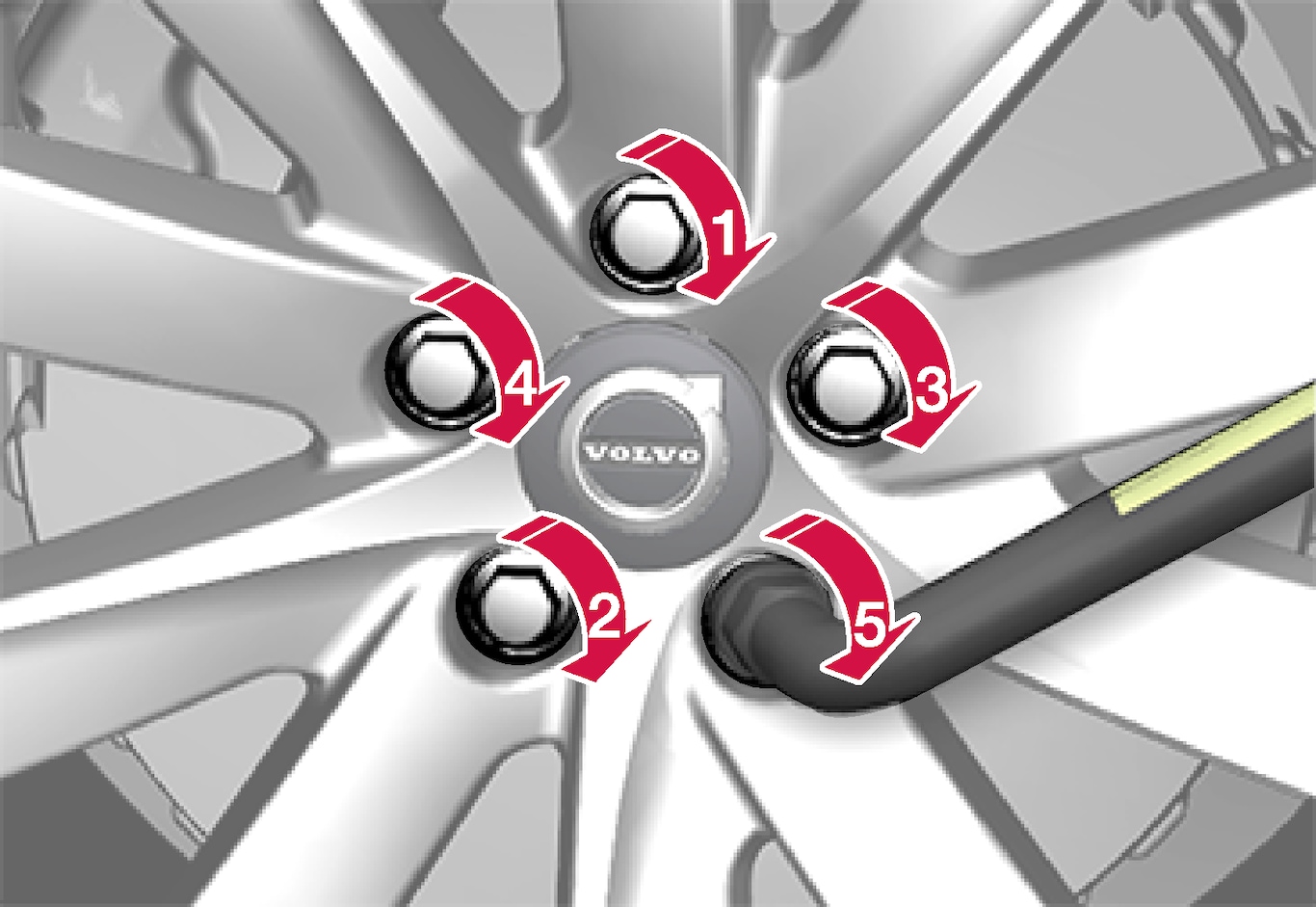Warning
- If a tire must be changed near passing traffic, make sure all passengers move to a safe location.
- Use a jack intended for the vehicle when changing a tire. For any other job, use stands to support the vehicle.
- Never crawl under or allow any part of your body to be extended under a vehicle supported by a jack.
- Never let anyone remain in the vehicle when it is raised on a jack.
Important
- When not in use, the jack* should be kept in its storage compartment under the cargo compartment floor.
- The jack provided with your vehicle is intended to be used only in temporary situations such as changing wheels in the event of a flat tire. Only the jack that came with your particular model should be used to lift the vehicle. If the vehicle needs to be lifted more frequently or for a prolonged period, using a garage jack or hoist is recommended. Always follow this device's instructions for use.
Removing a wheel
Read through all instructions before starting. Before raising the vehicle using a jack or lift, take out all the tools you will need.
Turn on the vehicle's hazard warning flashers if a wheel change must be performed in an area with traffic.
Using the lug wrench, screw the towing eye into place as far as possible.

Remove the plastic covers from the wheel bolts using the designated tool.
With the vehicle still on the ground, use the lug wrench/towing eye to loosen the wheel bolts ½-1 turn by pressing downward (counterclockwise). Always start with the locking wheel bolts*.
Follow the instructions for safely lifting the vehicle using a jack.
Raise the vehicle until the wheel to be changed can move freely. Unscrew the wheel bolts and lift off the wheel.
Installing a wheel
Clean the contact surfaces between the wheel and the wheel hub.
Lift the wheel into place. Tighten the wheel bolts securely.
Do not grease the wheel bolt threads.
Lower the vehicle so that the wheel cannot rotate.
Tighten the wheel bolts in a crisscross pattern (as shown in illustration). It is important that the wheel bolts are securely tightened. Tighten to 140 Nm (103 ft. lbs.). Use a torque wrench to check torque.

Press the plastic covers onto the wheel bolts.
Check the tire inflation pressure and store the new inflation pressure in the tire pressure monitoring system*.
Warning
The wheel bolts may need to be tightened again several days after a wheel change. Temperature fluctuations and vibrations can cause them to loosen slightly.
Note
- After inflating a tire, always replace the valve cap to help prevent valve damage caused by gravel, dirt, etc.
- Use plastic valve caps only. Metal caps could corrode and become difficult to remove.